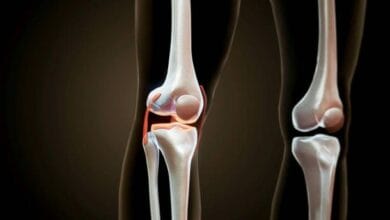
Each year, poor grain storage ruins endless harvests. Mold grows, bugs infest, and heat causes damage, leading to massive financial losses for farmers. Ending the problem is as easy as it gets, with a grain moisture meter.
The result of this is money, effort, and time lost. Small farmers, as well as large commercial farms, require accurate readings of moisture.
This guide explains how these meters work, how to pick the right one, and tips to boost accuracy. Protect your effort, and do not take chances with devices promising you precise storage. Let us get started.
Grain Moisture Meter Working Principle
Grain moisture meters operate on three major principles; each of which exploits varying scientific principles to reveal the measure of moisture in grains:
- Resistance Method: The principle of this method includes inserting metal probes into the grain. Moist grain propagates electricity better, hence electrical resistance is reduced. By measuring this resistance, the meter measures the moisture content of what it is introduced into. The resistance meters are rather well-liked in the spot checks in the field.
- Capacitance Method: Grain is located in a test cell in the capacitance method, where the grain interferes with an electromagnetic field. The dielectric properties of water are intense; therefore, any degree of increased moisture causes changes in the capacitance of the field. The meter reads this change and translates it into a percentage of moisture. Capacitance meters are the speedy and multi-grain oriented meters.
- Near-Infrared (NIR) Method: It is a sophisticated method in which the light waves are employed in the near-infrared. NIR meters reflect light onto the grain and measure how light has been absorbed. Water absorbs specific wavelengths so that the absorption rate will reveal the moisture level. NIR is very precise and ideal in laboratory conditions or commerce.
Why Grain Moisture Is Important
When grain moisture is ignored, farming producers can experience devastating losses.
- Avoiding Spoilage: Grain is a Biotic entity. All this moisture will promote mold, fungi, and insects, and the area will become hot, bumpy, and even toxic. A moisture meter for grain will tell you if it is ready for storage.
- Optimal Drying: Drying Farmers harvest at higher than storage-safe moisture levels. A grain moisture reading is taken on a moisture meter so you can dry your grain. Over-drying is a money-losing, time-consuming process, while under-drying ruins your grain.
- Fair Trade and Pricing: Grain trades rely on weight and quality measurements. Moisture levels have an impact on both. Wet grain tips the scale but contains less dry material, buyers often lower prices when the rain has high moisture. The grain moisture meter helps ensure fair and favorable prices during the sales.
- Safeguarding seed germination: The factors that ensure that the seed grain remains viable are controlling moisture. Wrong moisture levels can ruin seed germination potential. Using a grain moisture meter secures the value of your seeds for the next planting season.
- Improving Processing: Mills and factories need grain with specific moisture to work and produce high-quality goods like flour. A grain moisture meter confirms that maintaining steady moisture supports smooth operations.
How a Grain Moisture Meter Operates
A grain moisture meter is an in-line or portable instrument that measures how much water is contained in grains such as soybeans, wheat, or corn. The instrument provides an accurate measurement of moisture within seconds.
Producers, as well as grain handlers, utilize it in order to establish when to harvest, dry, or store grains. It measures how energy fields engage with the grain using electrical resistance or capacitance technology. More moisture reduces electrical resistance or boosts capacitance.
Newer models are easy to carry, tailored for specific grains, and adjust for temperature. You can think of it as a health monitor for grains, keeping moisture in a safe range to avoid spoilage, such as corn to 13 to 15 per cent.
Why Grain Moisture Is Important
When grain moisture is ignored, farming producers can experience devastating losses.
- Preventing Spoilage: Grain is a living organism. Lots of moisture encourages mould, fungi, and insects, making the space get hotter, lumpy, and even poisonous. A moisture meter for grain will tell you if it is ready for storage.
- Optimal Drying: Drying Farmers harvest at higher than storage-safe moisture levels. A grain moisture reading is taken on a moisture meter so you can dry your grain. Over-drying is a money-losing, time-consuming process while under-drying ruins your grain.
- Fair Trade and Pricing: Grain trades rely on weight and quality measurements. Moisture levels have an impact on both. Wet grain tips the scale but contains less dry material, buyers often lower prices when the rain has high moisture. A grain moisture meter helps ensure fair pricing during sales.
- Protecting Germination: Controlling moisture is key to keeping seed grain viable. Wrong moisture levels can ruin seed germination potential. Using a grain moisture meter secures the value of your seeds for the next planting season.
- Improving Processing: Mills and factories need grain with specific moisture to work and produce high-quality goods like flour. A grain moisture meter confirms that maintaining steady moisture supports smooth operations.
The Price of Overlooking Grain Moisture
Failing to measure moisture can come with a hefty price:
- Huge Storage Losses: The USDA says millions of bushels go bad yearly because of spoilage. A big reason is poor control of moisture levels.
- Lower Profits: Selling grain with too much water means farmers get paid for water instead of actual grain. Penalties for this can cut earnings.
- Turned-Away Loads: Delivering grain above moisture limits leads to rejected loads. This wastes time and money with delays and extra trips.
- More Costs of Drying: When you begin, the grain’s moisture level is unknown, causing a high guessing game when drying. Drying too long wastes fuel, and drying too little runs the risk of spoilage.
- Lower Nutritional Content: Once moldy or heated too much, grain no longer remains its feeding quality and affects animal outputs.
What is a Grain Moisture Meter Used For?
There are three kinds of technology that grain moisture meters utilize. Which includes:
- The Resistance Meter measure moisture by inserting probes into the grain. Wet grain carries electricity better than dry grain, reducing the probes’ electrical resistance. The device reads this resistance and shows the moisture as a percentage.
- Capacitance meters work. They need you to pour the grain into a sample cup. The grain inside disturbs an electromagnetic field. With its more potent dielectric properties, water changes the field’s capacitance. The sensors pick up on this change and figure out the moisture content.
- Near-infrared (NIR) meters, on the other hand, use light. They shine NIR light onto the grain. Some wavelengths of this light are absorbed by water. The moisture is measured with the help of sensors, which trace the amount of light absorbed by the grain.
Grain moisture meters adjust to grain temperature because it can change the readings. Calibration helps keep results accurate, no matter the grain type. Since corn is denser than wheat, meters adapt their calculations for each crop.
Types of Grain Moisture Meters
Picking the best meter to measure moisture. Here are your main choices:

1. Handheld Resistance Meters
These simple, low-cost tools have sharp probes that users insert into grain samples. They check how electricity moves through the grain and its moisture. These are great for quick tests in fields or storage bins.
Most of these meters are made for specific grains, like corn, and are easy to carry around. Some newer models include temperature adjustment and digital screens. Getting consistent samples, however, is still key to getting precise results.
2. Handheld Capacitance Meters
These devices use built-in sample cups to examine how an electromagnetic field changes when grain gets added. Water changes the capacitance due to its special dielectric properties. Users can switch calibration settings with buttons to check different types of grains.
They provide quicker readings than resistance meters, making them useful for testing truckloads at elevators or examining crops on farms.
3. Inline Moisture Meters
Mounted on dryers or conveyor lines, these systems check grain while it moves in real-time. They use capacitance or NIR technology to send nonstop data to control rooms. This allows for automated adjustments during drying. It is important to handle processing speeds of over 1,000 bushels per hour in commercial plants and large cooperatives.
4. Bench Top/NIR Meters
High-grade tools using near-infrared spectroscopy achieve precise results like those in a laboratory. They assess light absorption patterns at certain wavelengths to measure moisture levels with 0.1% accuracy. At the same time, they check protein or oil content. Seed companies and quality labs rely on these tools because their work demands exact measurements.
Which Is The Most Accurate Moisture Meter?
Laboratory-grade Near-Infrared (NIR) grain moisture meters are the most accurate. These machines provide high levels of precision, where accuracy can go up to 0.1 percent.
They would be optimised to work in labs and commercial grain plants where data accuracy would be paramount. The most common manufacturers are Perten and Kett, who make reliable NIR meters that can be utilized in a quality control setting.
In the field, automated temperature-compensated handheld capacitance meters are a good trade-off between being more accurate than a thermocouple, portable, and affordable.
Measuring the Moisture of the Grains
To determine the moisture content of grain, proceed as described below:
- Get a representative sample: To avoid any representation of inaccuracies, get a sample of the grain in different locations: at the top, the middle, and the bottom of the bin, truck, or the field.
- Clean sample: The debris, chaff, and foreign matter that could affect measurement should be eliminated.
- Choose the grain to test: Open the moisture meter on the grain to be tested, which may be wheat, corn, or soybeans.
- Insert or load sample: Resistance meters use a probe, and capacitance meters must be poured into a sample cup.
- Wait to stabilize: Wait a few seconds until the meter processes the reading.
- Write down a record: Write down the percentage showing, and repeat the test on other samples.
- Mean multiple results: Mean readings are obtained to obtain a reading of the overall moisture content.
The Best Way to Select the Grain Moisture Meter
Choosing the best grain moisture meter is a matter of great accuracy. Avoid deciding based on price alone, focus on getting dependable and precise results. These are the things you need to know:
1. Accuracy Comes First and Isn’t Optional
Your meter’s accuracy has a significant impact on profits and losses. Choose tested and accurate meters within a range of ±0.3% to ±0.5% to measure grains like corn or soybeans. Use independent resources such as Purdue Extension or Iowa State University Agronomy Reports to verify performance. A bad reading can cost money by over-drying (wasting over $500 in propane for every 10,000 bushels) or by under-drying (ruining an entire bin of grain).
2. Grain Type Compatibility
Make sure that the meter is compatible with all the crops that you handle: corn, wheat, soybeans, rice, barley, and sorghum, etc. Crops differ a lot in density and makeup. A meter made just to measure corn will not work well with lentils. Multi-grain meters need simple options to pick settings for specific crops.
3. Sample Size and Ease of Use
Efficiency in the field is essential. Cup-style capacitance meters let you test 500g samples often within seconds. Probe meters take more steps since you need to insert and pack them. This can be slower when handling large quantities. Pick meters with user-friendly designs. Can you use them while wearing gloves? Can you read the screen in bright sunlight?
4. Durability and Portability
Farm settings can be strict. Pick meters built to last with IP54-rated protection against dust and water. Look for ones with rubberized cases and metal probes. A battery life of over 20 hours is vital so you can use it all day during harvest. Target devices not weighing more than 1.5 lbs to prevent additional strain.
5. Temperature Change Management
Grains at different temperatures mess with moisture readings. A meter missing automatic temperature compensation might show 16% moisture for cold grain, which is 14%. Get a device that can adjust for samples anywhere between 40°F and 100°F on the spot.
Mastering Your Grain Moisture Meter
Even the best meter needs proper use:
- Collect a Good Sample: Always grab samples from multiple spots across the bin, truck, or field. Mix them well before testing to avoid bad results from an unrepresentative sample. It is essential to do this step!
- Stick to Instructions: Read the manual. You must know the right amount of grain to use, how to prep it, like removing chaff, and the exact steps involved in testing for your specific grain type.
- Keep It Calibrated: This is a must. Certified calibration standards are the way to go. Do the calibration at least once before the harvest season starts and every time the meter is dropped. It’s even better to calibrate more often when you can.
- Watch the Temperature: Try to keep both the grain and the meter at the same temperature. The meter’s built-in temperature compensation will help, but avoid testing when there’s a big temperature difference.
- Select the Right Grain Setting: Before testing, choose the correct grain type on the meter. Picking “corn” when you’re testing wheat will give inaccurate readings.
- Maintain Your Meter: You may clean the probes to ensure they are clean of dirt or debris. Put the device in its case, and change the batteries before they die.
- Take Several Readings: Don’t make decisions based on one test alone. Test and average a few samples from your mix to get more dependable results.
India Grain Moisture Meter Price
The cost of the grain moisture meter in India varies, and it greatly depends on the model, characteristics, and manufacturer. This is a breakdown:
- Basic resistance meters (INR 3,000 -INR 6,000) are small-scale farmers’ most basic models. They usually use test probes and manual adjustment.
- Digital Capacitance meters (INR 8,000 to INR 15,000): They are more accurate, shorter in time, and may accommodate a range of grains. They invariably have temperature compensation and digital readouts.
- High-end Near-Infrared (NIR) lab meters (INR 50,000 and more): These are specification-based models that fit in labs, grain processing units, and seed companies. They provide super-accurate readings and options for measures that include protein or oil content.
Indian brands that are popular in the market are Mangal, Kett, Labtronics, and Indosaw.
Best Moisture Meter for Grains
The desire to select the most effective moisture meter is explained by the results of its accuracy, durability, grain compatibility, and simplicity. The best ones might be:
- Dickey-John Mini GAC Plus: one of the most reliable portable metering systems, with its use throughout the world. It accepts more grains and has an accurate reading with memory onboard to store calibration parameters.
- AgraTronix MT-Pro: A digital meter that can be read easily and fast, with a backlit display and auto compensation of temperature, making it perfect for use in the field.
- Farmex MT-16: Has good value in terms of its money. It is compact, easy to run, and competent in small to medium-sized farms.
A model should always be chosen based on farming size, crop type, and testing frequency.
Beyond the Harvest
Your grain moisture meter isn’t just for harvest:
- Pre-harvest Checks: Check field moisture to know when to harvest. Do not harvest so wet to raise drying costs or so dry to run the risk of shattering the crop.
- Storage Monitoring: periodically monitor grain moisture in stored grain, particularly following aeration or due to temperature fluctuations. When rising moisture is caught early, it does not cause large spoilage.
- Drying Management: Constantly watch out as the grain leaves the drying machine to get the proper target moisture without over-drying.
- Blending: It is good to combine lots of grain with differing moisture levels to produce safe, uniform moisture, as determined by your meter.
- Receiving & Loading: Elevators and processors run meters continuously, measure incoming grain to grade it, and specify shipments.
Conclusion
Moisture control is central in the world of grain production and handling, which is characterized by high stakes. It is a chance no one can take to guess the moisture content. To make wise decisions, a proper grain moisture meter can get you the necessary data to regulate the process of harvest season, drying, safe storage, and fair marketing.
Use a proper meter, use it properly, and use it for grain management. You save your investment, get optimum returns, and guarantee a quality crop in your harvest. Use your grain moisture meter as your set trip to profit.
FAQs
What is a safe moisture level for storing corn?
Safe moisture depends on grain type and storage temperature/duration. Generally, for long-term storage (over 6 months, corn must be 13-15% or lower. Soybeans are typically stored at 11-13%. Wheat at 13.5% or lower. Always consult current guidelines from your local extension service, as recommendations can vary slightly. Your grain moisture meter is vital for hitting these targets.
Is it necessary to adjust the grain moisture meter immediately after using it or only after a specific period?
Always do calibration when you commence harvest, when you change the battery, when you drop the instrument, and when you suspect that the readings are not accurate. Calibrate your scale once a week or once a day when you use your scale regularly. Whenever you test your meter, you need to evaluate its precision using appropriate certified grain samples and other types of grain.
Is it possible to use one moisture meter with all types of grain?
Most modern handheld meters (capacitance and resistance types) are multi-range meters. They come with familiar grain settings, such as corn, soybean, wheat, rice, etc. However, you must ensure the grain setting is used in the meter before testing each one. Setting it in the wrong setting provides false results. Look at the specifications of the meter in the list of supported grains.
Why can I read differently in the same bin?
The hoisting of moisture in a bin may be caused by temperature variance and moisture movement. This brings out the need to take a representative sample. Take samples of different areas (top, bottom, middle, center, and sides), thoroughly mix the sample, and take numerous samples across the mixture. The most accurate overall picture will be an average of the readings.
Is it worth it for a farm to have expensive NIR moisture meters?
High-quality capacitance or resistance handhelds are more affordable than high-quality capacitance or resistance and are accurate enough in most individual farms. NIR meters are valuable in speed, non-destructive testing, and, in some instances, multi-parameter analysis (such as protein/oil), and therefore valuable for high-volume test applications (such as at elevators), laboratories, or seed companies. Compare your unique volume and accuracy requirements.



